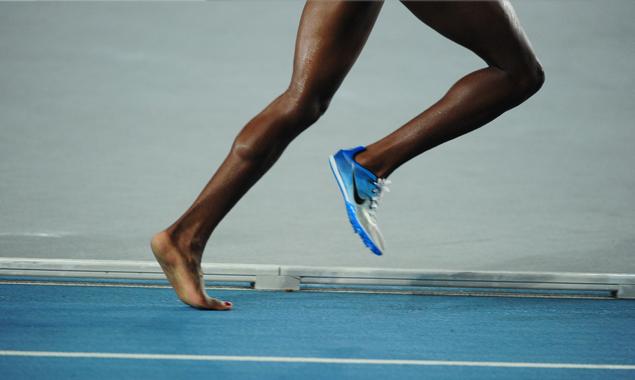
Jogging can be a wonderful habit to cultivate. Not only does it get you outside and moving, elevating your heart and encouraging your cardiovascular system to thrive, but it also contributes to feelings of mental well-being and has been shown to boost your mood and reduce levels of stress. Of course, jogging can also be a daunting habit to develop.
You see people running with poise and the latest sports fashion, looking not at all out of shape or out of breath, and that leaves you wondering if you can do the same thing; after all, running is hard. The following will explore a few tips for people who want to start jogging. The focus here is absolute beginners, but many of these tips will carry over into more experienced jogging as well.
Understand That A Little Bit Often Is Better Than A Lot Rarely
When you’re first embarking on a new journey, it’s easy to set your aim high. You’re motivated and excited to make jogging part of your life. Study after study has found that one of the best ways to create a habit is through consistency, and this means that your initial aim needs to be something you can actually do regularly. It needs to be something you can accomplish on those days when work is hectic, your partner is moody, and the dog has decided to tear apart the carpet in the living room (again). It needs to be something you can do on days when you’re tired, frustrated, or miserable.
Often when people are first starting out, they set their aim incredibly high like: I’m going to run/walk for an hour every day. This is a great longer-term goal but is probably something that is going to take time to build towards, not just because your body needs to build up resilience to jogging, but because your daily life isn’t set up for you to be spending an hour every day on something new.
Remind yourself that doing a small amount regularly is far better than doing a lot for a couple of days or weeks and then quitting. If you end up aiming for ten minutes a day, that’s fantastic. Honestly, the easier the habit is to accomplish, the more likely you are to stick with it through life’s ups and downs. You can add more time or distance to your jogs once it’s become something you do without even thinking about it because it’s so ingrained in your daily life.
Take Care Of Your Feet And Joints
When you first start running, it’s often your stomach, your lungs, and your heart that draw your attention, as these are the areas you feel your first few runs in the most. It’s important not to let your feet and joints go without your notice. Running can be hard on some joints, especially if you’re running on hard surfaces like sidewalks or treadmills. This is especially important if you have flatter feet; Tom from Sports Rambler points out that “Finding shoes specifically designed to help flat feet is like finding a needle in a haystack. Be sure to read reviews written by people with flat feet or an understanding of flat feet. No matter the structure of your arches, you want something that absorbs shock to help reduce the impact on your ankles, hips, and knees.

Listen To Your Body
As you begin jogging, you’re going to experience a wide variety of sensations. If you haven’t been particularly active for a while, you might find these sensations very foreign. This is normal and completely okay. This being said, if you have severe physical reactions to any aspect of jogging, you need to listen to what your body is telling you. A little soreness is normal, but a lot can mean that something about your gait is off, your shoes don’t fit right, or the surface you’re running on is too hard for you. If you’re someone who is a little out of touch with your body, you might want to take notes on your phone, just a few bullet points after each run, and on your rest days as well about how you feel. Pain should never be ignored. Trouble breathing should never be ignored. Sensations in your body are how your body communicates to you about whether changes need to be made.
Pay Attention To Your Thoughts
Jogging is associated with different things for different people. It is possible that some of your associations might not be helpful or accurate. And they might get in the way of you developing a jogging habit. For some, jogging will bring back painful memories of gym class in school (where all too often humiliation is used as a tactic of social control by teachers). It might remind you of sibling rivalries or be tied to your understanding of health, fitness, or weight. When thoughts arise regarding jogging, pay attention to them. Any thought that is harsh or negative is allowed to be there (it’s a completely appropriate reaction to your previous experiences—anyone who had your life would have those associations), but that doesn’t mean it’s true. Take the time to find an example that proves these sorts of thoughts wrong:
- No matter how much I train, I’m never going to look a certain way
- Who am I kidding? I can’t be a sporty person
- Easy for him/her to say, they only work part-time
- If I had that person’s parents/financial situation/partner etc., things would be different
- I’ll never be able to x
- People like me can’t do y
Equip Yourself With the Right Gear
While jogging doesn’t require a significant amount of equipment, it is important to have the proper gear before heading out on your run. The most essential piece is a good pair of running shoes that are comfortable and provide enough support for your feet. It may be tempting to keep using an old pair, but investing in new shoes can help prevent injuries and make your jogging experience more enjoyable.
Other gear that may be beneficial includes a water bottle to stay hydrated, comfortable and weather-appropriate clothing, and a phone or music player if you enjoy listening to audio while running. It’s important to take care of your body during your jog by staying hydrated and dressing appropriately for the weather conditions.
Jogging can also be a great opportunity to invest in a fitness tracker or smartwatch to track your progress and set goals for yourself. These devices can provide valuable information such as distance, pace, and heart rate to help you improve your jogging routine. Running belts are also a must-have for some joggers, providing a convenient way to carry essentials like keys and phones while on the go. When looking for the best running belts, make sure to choose one that is comfortable and fits securely for a hassle-free jog. They should also be durable and able to withstand regular use in varying weather conditions.
For every instance of someone who had things easier than you, there will be an instance of someone who had things harder than you and made it work. It’s important to realize that your thoughts are not necessarily true. Look for the exceptions to the internal beliefs you have developed and watch your emotional associations with jogging change.
The above information should help you get started jogging. It’s important that you take things slow and work your way up to the more hardcore, long-distance runs; your body needs time to build muscles and endurance. If you take on too much at the start, you run the risk of getting injured, and nothing is going to slow down your habit of jogging faster than an injury. Finally, if you have a medical condition related to the cardiovascular system, this doesn’t mean you can’t jog, but it does mean you need to take extra precautions and ensure that your approach is in line with a trusted healthcare provider’s advice.

















Follow Us